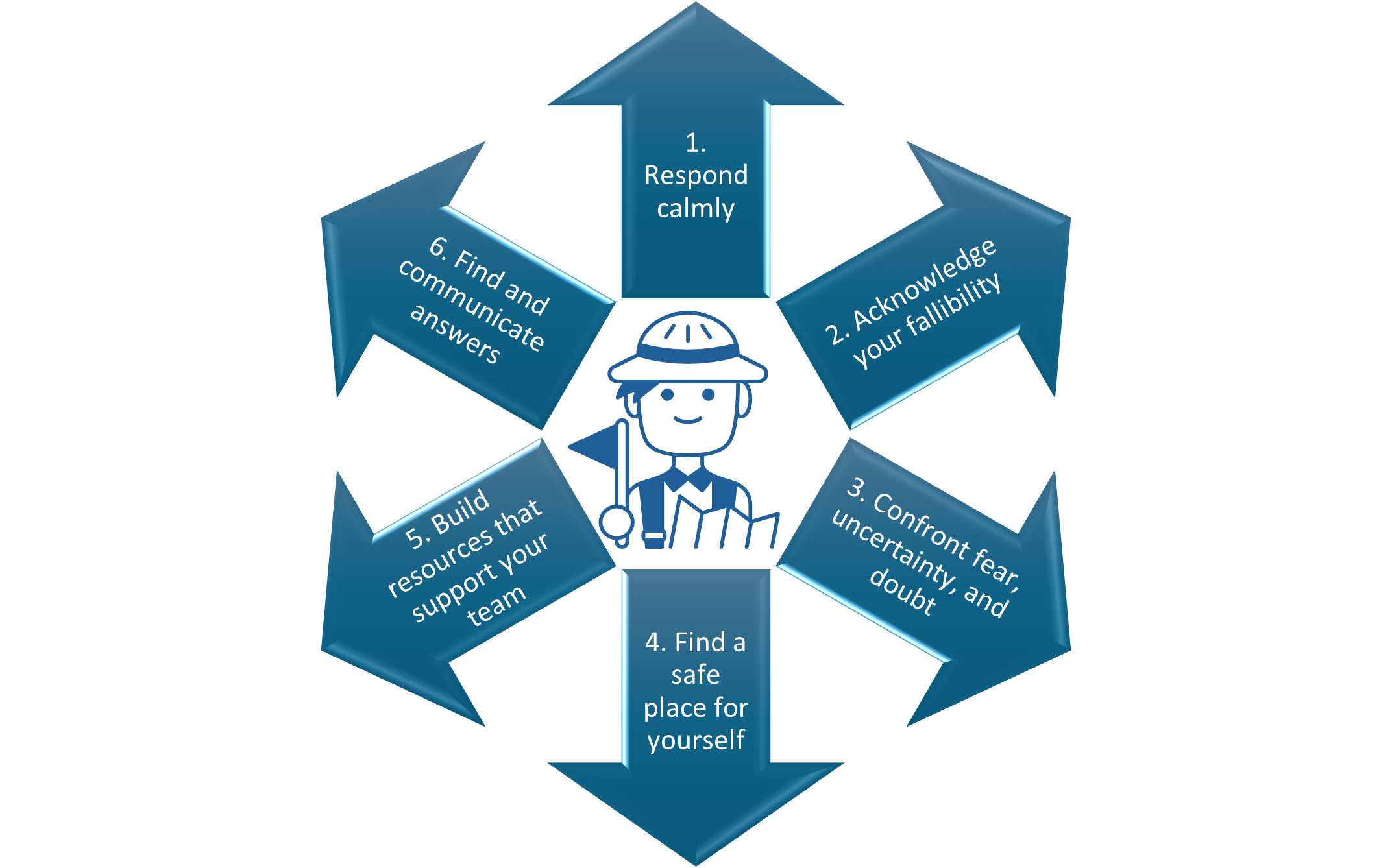During ambiguous times, leaders are like guides through an untamed jungle, helping their teams chart a safe path through difficult obstacles. But how can you guide others when you can’t see anything yourself–when everything is shrouded in fog or obscured by torrential rain?
Recently the management team at a client was struggling with this. How could they lead well during an ambiguous, all-consuming project to revamp their enterprise software and business processes? I shared six techniques with them, drawn from my experience managing product development teams during uncertainty.

Respond calmly.
Fear and confidence are both contagious. Project calm to your frontline teams, even if your own gut is churning. Acknowledge that the situation is ambiguous, but also your confidence that the team can work together to overcome obstacles. (For further insights, explore Dr. Amy Edmondson’s research on psychological safety in the workplace at spspro.com/psychological-safety.)
Acknowledge your fallibility.
Isn’t admitting fallibility a sign of weakness exactly when your team needs to see a strong leader? Not at all. It’s acknowledging that the team must depend on each other if they are going to find a safe path forward. Say things like “I may miss something that I need to hear from you. We need everyone’s voices in the game, so please speak up.” Acknowledging what you don’t know is fine – as long as you promise to follow up with answers and deliver on that promise.
Confront fear, uncertainty, and doubt (FUD).
Seek it out, because avoiding FUD makes it worse. When you find pockets of FUD, replace it with facts and realistic expectations. Address legitimate concerns that may underlie the fears.
Find a safe place for yourself.
Even though you must be calm and composed with your team, you need a place for yourself where you can worry and vent openly. Gather several trusted colleagues to create a private space where you can discuss concerns and questions. It’s OK to vent in that safe space as long as you shift to constructive problem-solving.
Build resources that support your team.
Another way to tackle uncertainty is to equip your team with helpful resources. For example, encourage tough questions at frequent Q & A forums. Gather frequently asked questions and develop a repository of answers. Share relevant experiences from previous times in your career and connect members of your team with others who have relevant experience or knowledge.
Find and communicate answers.
There will be times when you don’t have immediate answers. You may need extra time to find feasible paths forward for your team. Don’t go silent while you are working on this. Silence will create a dangerous void that people will quickly fill with their fears and speculations. Instead, make it your mission to systematically reduce uncertainty, communicating early and often about what you are doing.
What strategies have you used to lead during ambiguous situations? Please share your thoughts—I’d love to hear them.
I teach and consult about highly effective projects, portfolios, and leadership. For more about techniques for leading during crisis, check out Gianpiero Petriglieri’s work on organizational holding here or at spspro.com/dont-cheerlead-during-a-crisis. You can contact me at [email protected].
